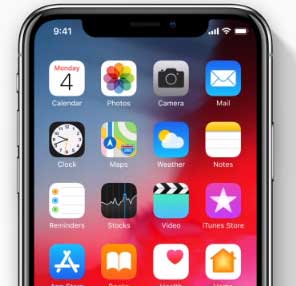Taxi App – How taxi startups can adapt to changing technologies
Taxi App | changing technologies and needs
Taxi App: The taxi industry has indeed been revolutionized with smartphone applications. By providing a plethora of cab features in response to a few taps on devices, the new technology has given new taxi startups a major edge over taxi companies that don’t use an application to offer their services.

If you’ve missed out on the app revolution or you’re an emerging taxi startup, here’s how you can adapt to the ever-evolving technology and cater to millennial needs.
Taxi services with and without an application
The features that customers can use in a taxi booking application are unmatched by the outdated conventional way of hailing a taxi. Cab apps are easy-to-use and allow users to make extensive choices. Although only a few companies reign over the majority of the industry’s revenue, several startups that make use of apps have sprung up in recent times.
It has become inconceivable to think of a taxi company that does not offer its services through a mobile application. The surge in demand for apps has made developing apps for businesses a seamless, quick process, especially with an Uber clone app.
Uber and Lyft are two major leaders in the taxi service industry. Uber generated a revenue of $316.6 crores USD as of June 2019 and Lyft raked in a revenue of $215.7 crores USD as of 2018.
The primary source of their mammoth revenue is through their mobile phone applications. Running any on-demand service business today, let alone a taxi business requires a well-built application. Not using mobile software to offer cab services results in the loss of an untapped revenue stream.
Why develop a taxi app?
Today, providing transportation services is incomplete without an application. A customer can set a pickup/drop-off location, choose the type of vehicle, see driver details, choose a mode of payment, receive an invoice of the trip and finally leave a review.
All of it requires is minimal input from the customer on the app. The technology beats the traditional hassles of having to brief the cab company about all of the details over the phone.
Keeping up with the times
The service industry is constantly evolving. Companies are constantly ideating and innovating new ways of appealing to their customers. The digitalization of business models has led various entrepreneurs to opt for Uber-like app development services.
The competition is stiffer than ever. If you haven’t yet started using an application to dole out your company’s services, it is now time to make that transition. Here’s how you can keep up with the technological changes that will let you beat your competitors.
Find out what you need
Different technologies and up-gradation serve different purposes. With a multitude of technologies available, pick out the ones that will suit your business needs.
By choosing an appropriate tech stack, you can begin to develop your application. Well-chosen technology stacks fall within your budget, saves you time, and lets you maintain and scale your project.
The technology stack, in turn, will support essential features that amalgamate the current market’s quintessential taxi application. Features include:
- Real-time GPS tracker
- Push notifications
- Multiple payment options
- User, driver, admin panels
- Dashboards
Be prepared for change
The ever perpetual thirst for technology to find faster and simpler ways of performing functions will always warrant frequent changes in the market. Despite using the latest technology, businesses often find themselves quickly lagging behind the latest updates and features in the market.
Being quick to respond and being agile tackles this problem. Ensure that your application is prepared for customization, updates, and for adding new features.
A big part of keeping up with the times of technology is to upgrade your platform with every new update, which can easily be done using an Uber clone app.
Test it out
To make sure that your taxi application will function without interruptions in different smartphone scenarios, it is vital to test and debug your app before launching it out to the public. Testing reveals any flaws that may exist in your software. Check for functions such as:
- Network
- Touch functions
- Visuals
- Navigation controls
- Responsiveness
Optimize
There is more to the journey of a successful taxi app even after having built and launched the application in app stores. To be able to reach a wide audience and rank highly on app stores, it is essential to optimize your app according to the latest market standards.
By tweaking the title, thumbnail, description, and screenshots of your app, your software could appear on more search queries which in turn grants your business more customers.
Estimate costs
Building an application and training your associates to use them will incur financial expenditure. Assess how much it would cost and allocate your budget for the up-gradation accordingly.
Being mindful of the potential returns on investment can be a great motivator to help decide how much money you’ll need to put into your business.
Summing-up
Mobile phone applications have become inseparable add-ons of businesses. They grant entrepreneurs a convenient system to offer and manage services.
Using an Uber clone app is the quickest way to launch a high-quality application into the market. Get with the times.
Author Bio
Jennifer Atkinson is a Growth hacker & marketer for Appdupe’s Uber clone product. She loves to find new business ideas and helps startup entrepreneurs with business consultation. She has a specialty in writing about startup ideas, feasible business recommendations, etc.






Hi, I’m really impressed with this content! Thank you for share such an great content with us, Now i am going to visit your website. I would like to add one thing, how to rate your article. Because i would like to give 5 out of 5.